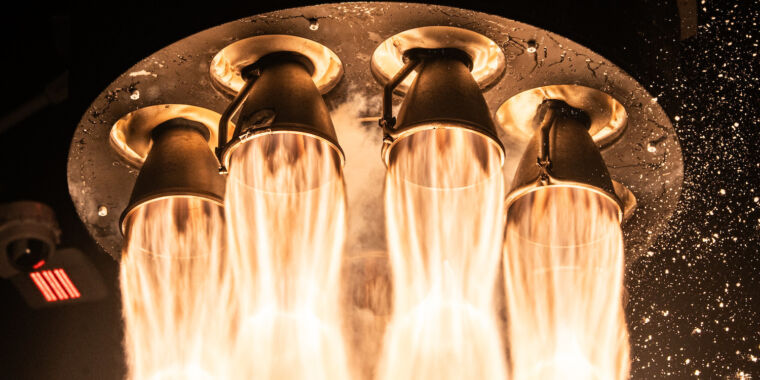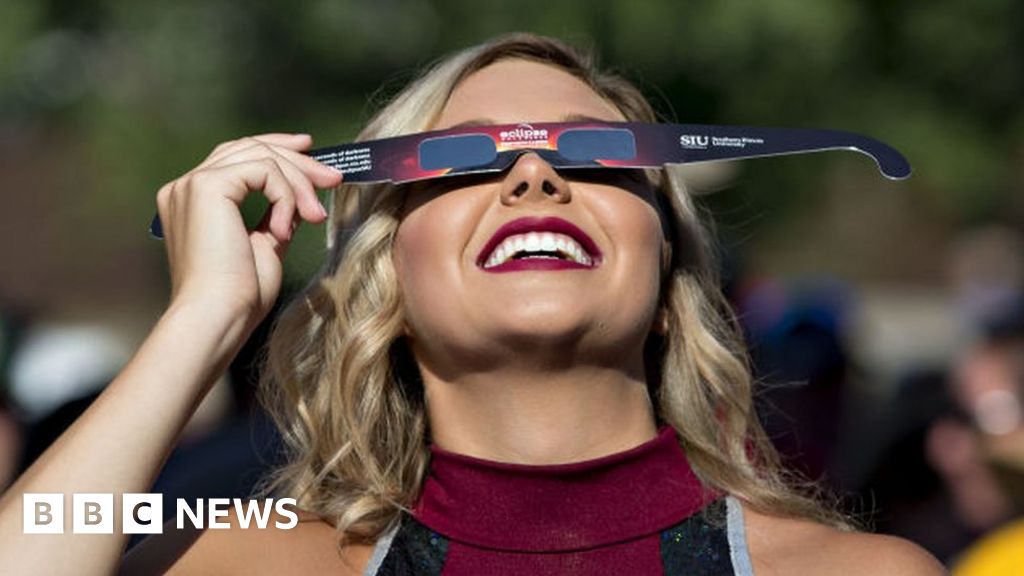[ad_1]
The new method, developed by a team of physicists from the University of Bonn and the University of Bristol, makes it possible to precisely determine the position of an atom in 3D with one single image, and is based on an ingenious physical principle.

The different rotational directions of the various ‘dumbbells’ indicate that the atoms lie in different planes. Image credit: Institute of Applied Physics, University of Bonn.
“Anyone who has used a microscope in a biology class to study a plant cell will probably be able to recall a similar situation,” said University of Bonn’s Dr. Tangi Legrand and colleagues.
“It is easy to tell that a certain chloroplast is located above and to the right of the nucleus. But are both of them located on the same plane?”
“Once you adjust the focus on the microscope, however, you see that the image of the nucleus becomes sharper while the image of the chloroplast blurs.”
“One of them must be a little higher and one a little lower than the other. However, this method cannot give us precise details about their vertical positions.”
“The principle is very similar if you want to observe individual atoms instead of cells. So-called quantum gas microscopy can be used for this purpose.”
“It allows you to straightforwardly determine the x and y coordinates of an atom.”
“However, it is much more difficult to measure its z coordinate, i.e., the distance to the objective lens: in order to find out on what plane the atom is located, multiple images must be taken in which the focus is shifted across various different planes. This is a complex and time-consuming process.”
“We have now developed a method in which this process can be completed in one step,” Dr. Legrand said.
“To achieve this, we use an effect that has already been known in theory since the 1990s but which had not yet been used in a quantum gas microscope.”
To experiment with the atoms, it is first necessary to cool them down significantly so that they are barely moving.
Afterwards, it is possible, for example, to trap them in a standing wave of laser light.
They then slip into the troughs of the wave similar to how eggs sit in an egg box.
Once trapped, to reveal their position, they are exposed to an additional laser beam, which stimulates them to emit light.
The resulting fluorescence shows up in the quantum gas microscope as a slightly blurred, round speck.
“We have now developed a special method to deform the wavefront of the light being emitted by the atom,” said Dr. Andrea Alberti, also from the University of Bonn.
“Instead of the typical round specks, the deformed wavefront produces a dumbbell shape on the camera that rotates around itself.”
“The direction in which this dumbbell points is dependent on the distance that the light had to travel from the atom to the camera.”
“The dumbbell thus acts a bit like the needle on a compass, allowing us to read off the z coordinate according to its orientation,” said University of Bonn’s Professor Dieter Meschede.
The new method could be used to help develop new quantum materials with special characteristics.
“For example, we could investigate which quantum mechanical effects occur when atoms are arranged in a certain order,” said Dr. Carrie Weidner, a physicist at the University of Bristol.
“This would allow us to simulate the properties of three-dimensional materials to some extent without having to synthesize them.”
The team’s work was published in the journal Physical Review A.
_____
Tangi Legrand et al. 2024. Three-dimensional imaging of single atoms in an optical lattice via helical point-spread-function engineering. Phys. Rev. A 109 (3): 033304; doi: 10.1103/PhysRevA.109.033304
Maqvi News #Maqvi #Maqvinews #Maqvi_news #Maqvi#News #info@maqvi.com
[ad_2]
Source link
















































